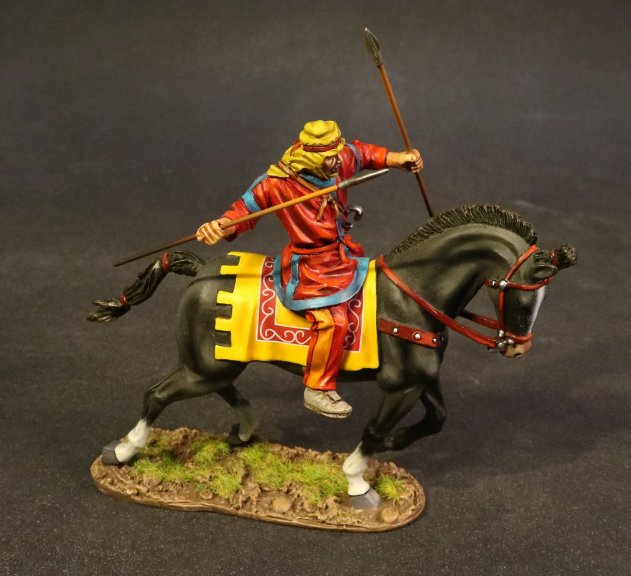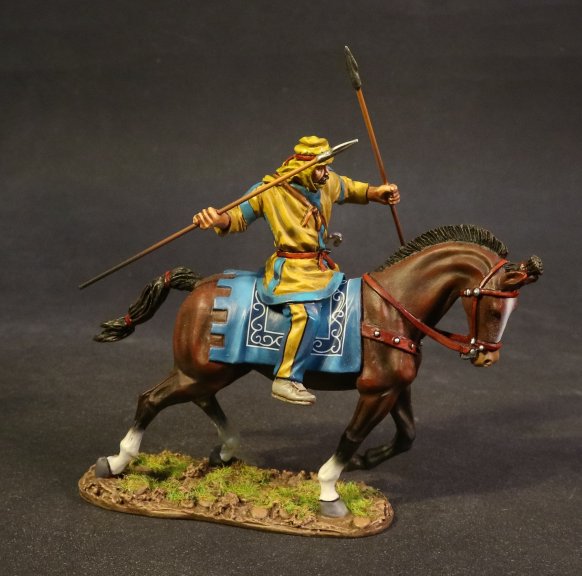- Joined
- Feb 2, 2011
- Messages
- 2,093
NEW RELEASES FOR SEPTEMBER 2020
THE ANCIENTS COLLECTION
ARMIES AND ENEMIES OF ANCIENT ROME
MID REPUBLICAN ROMANS
PUBLIUS CORNELIUS SCIPIO AFRICANUS
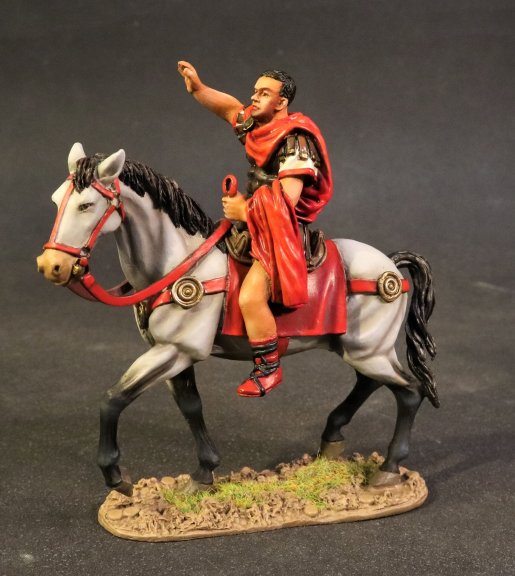
SCIPIO-A
ARMIES AND ENEMIES OF ANCIENT ROME,
MID REPUBLICAN ROMAN,
PUBLIUS CORNELIUS SCIPIO AFRICANUS 236/5-183 BC.
(2 pcs)
Publius Cornelius Scipio Africanus (236/5 – 183 BC) was a Roman general and later consul who is often regarded as one of the greatest military commanders and strategists of all time.
His main achievements were during the Second Punic War, and is best known for defeating Hannibal at the final battle of Zama in 202BC. This victory was one of the feats that earned him the agnomen “Africanus”.
His conquest of Carthaginian Iberia culminated in the Battle of Ilipa in 206BC against Hannibal’s brother Mago Barca.
ARMIES AND ENEMIES OF ANCIENT ROME
THE CARTHAGINIANS AND THEIR ALLIES
The military of Carthage was one of the largest military forces in the ancient world. Although the navy was always Carthage’s main force, the army acquired a key role in the spread of Carthaginian power.
With its Phoenician origins, Carthage already had a long history as a seafaring people. This was helped in that the navy was a permanently manned force, whilst the army would be enlisted only for a particular campaign and then demobilized.
Therefore it was easier to understand how the Carthaginian army was a Combined arms force, which comprised light and heavy infantry, skirmishers, light and heavy cavalry, as well as elephants.
The supreme command of the military was initially held by the civilian “Suffetes” until the third century. Thereafter, professional military generals were appointed directly by the Carthaginian Senate.
Whilst the navy was mainly manned by citizens, the army was composed almost exclusively of foreign mercenary units, particularly Libyans, Numidians, Iberians, Gauls and Greeks.
Only when the city of Carthage itself was threatened would citizens be conscripted into infantry service.
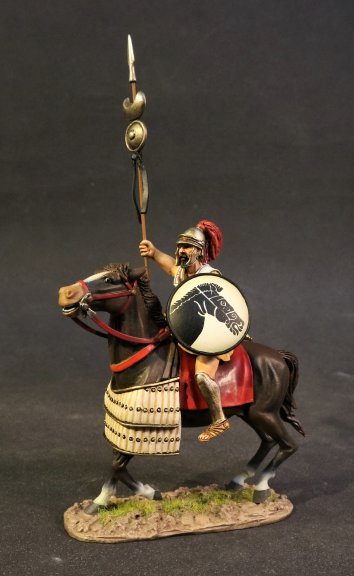
CT-02
ARMIES AND ENEMIES OF ANCIENT ROME,
THE CARTHAGINIANS,
CARTHAGINIAN STANDARD BEARER.
(2 pcs)
THE NUMIDIANS
The Numidians were the Berber population of Numidia (present day Algeria and in a smaller part of Tunisia). The Numidians were one of the earliest Berber tribes to trade with the settlers of Carthage, and as Carthage grew , the relationship with the Numidians blossomed. Carthage’s military used the Numidian cavalry as mercenaries. Numidia provided some of the highest quality cavalry of the second Punic war, and the Numidian cavalry played a key role in a number of battles, both early on in support of Hannibal and later in the war after switching allegiances, to the Roman Republic.
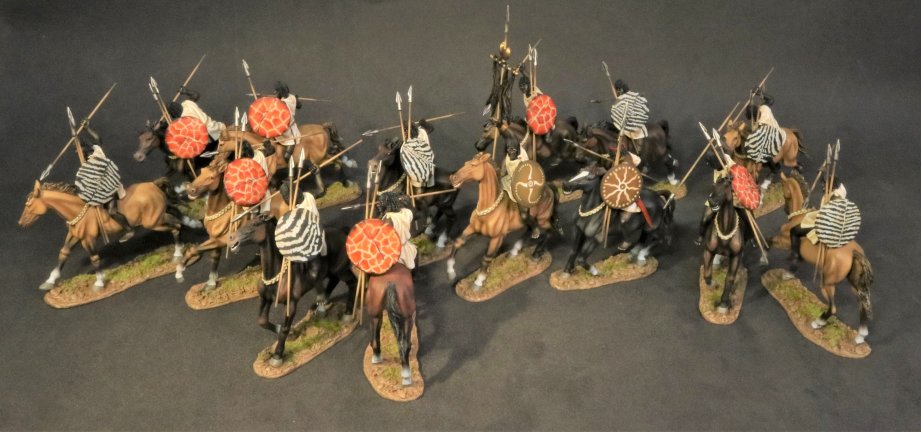
Ancient authors, such as Polybius and Livy, tend to stress Carthage’s reliance on mercenary units, which is slightly misleading when applied to the Carthaginian army. While Carthage did employ mercenaries in the true sense of the word, Carthage’s usage of native African and Iberian recruits would not be true mercenaries as these peoples were subjects of Carthage.
Also Carthage’s army was composed of recruits from its allies fighting for Carthage in accordance with bilateral treatise. The Numidian Kingdoms are an example who provided extensive light cavalry due to the close relationship between the two states.
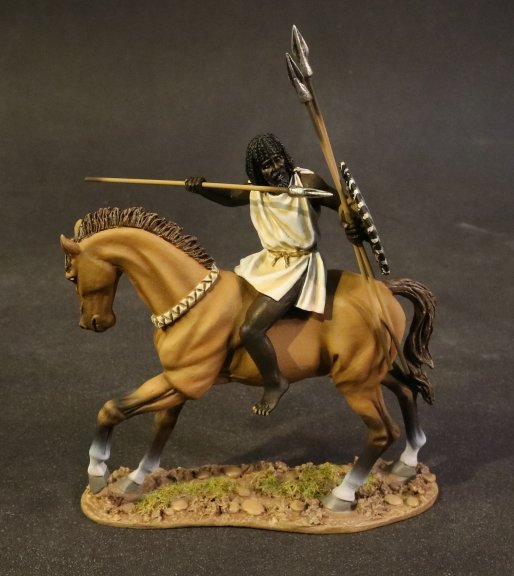
CTNUM-04A
ARMIES AND ENEMIES OF ANCIENT ROME,
THE NUMIDIANS,
NUMIDIAN LIGHT CAVALRY.
(3 pcs)
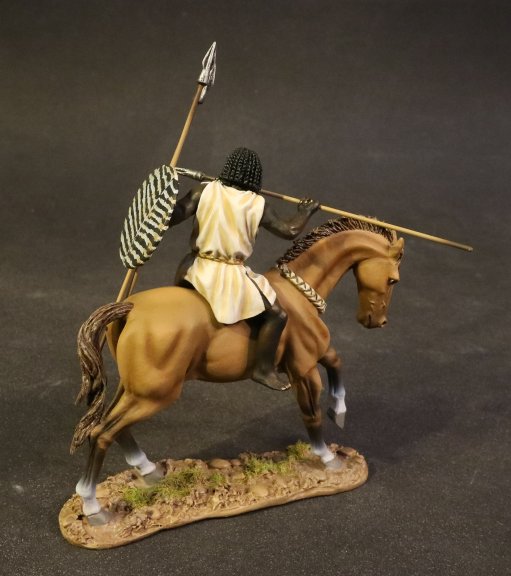
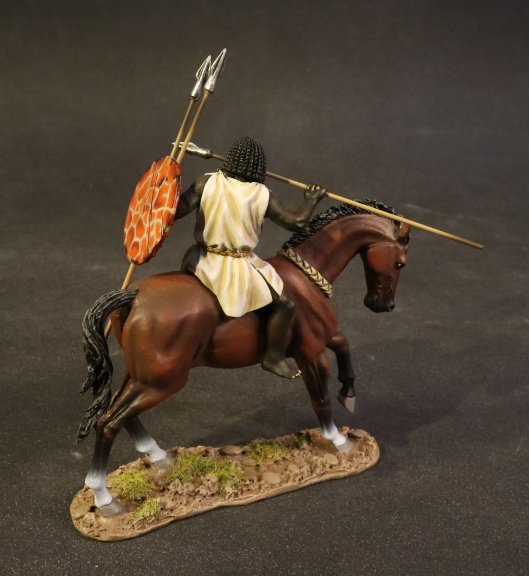
CTNUM-04B
ARMIES AND ENEMIES OF ANCIENT ROME,
THE NUMIDIANS,
NUMIDIAN LIGHT CAVALRY.
(3 pcs)
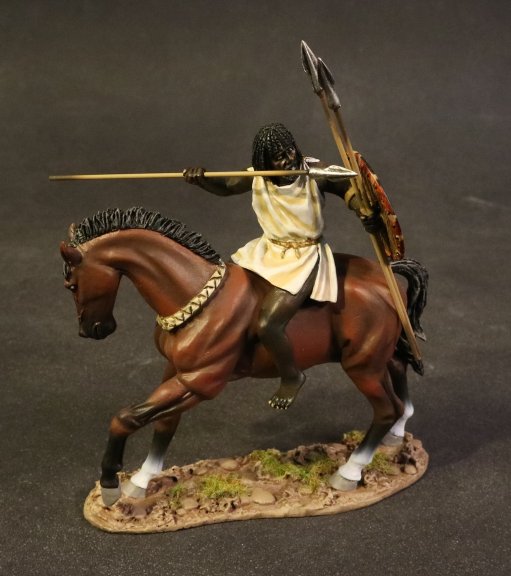
THE SPANISH
There is some confusion over the precise identity of the Spanish troops that fought in the Punic Wars. The original inhabitants of the Iberian peninsula were the Iberians, a Caucasoid people who were famed as warriors, and who served as mercenaries in many parts of the Mediterranean world. They served as mercenaries in the Carthaginian armies from at least 342BC.
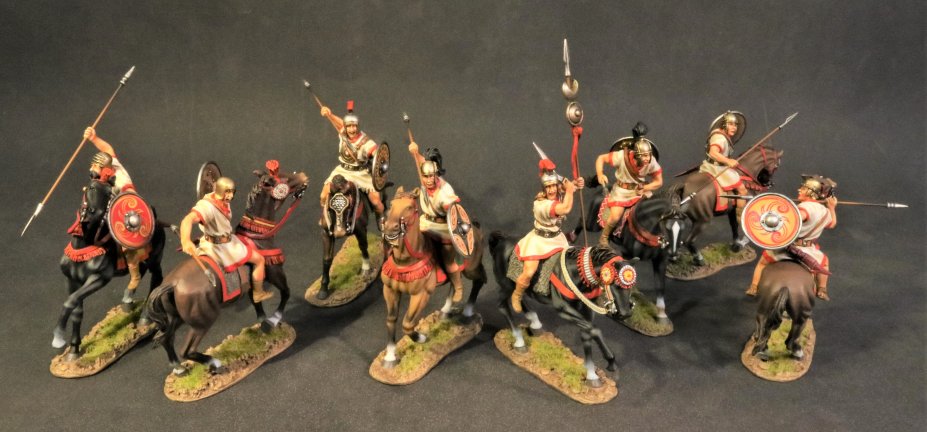
By the 3[SUP]rd[/SUP] Century BC the Celts,9who had invaded from the North) and Iberians had merged to form a distinctive new people in the north east and central plateau of the peninsula, known as the Celt-Iberians.
The Celt-Iberians fought for the Carthaginians and by the time of the 2[SUP]nd[/SUP] Punic War it is thought that both soldiers were similar in appearance and equipment.
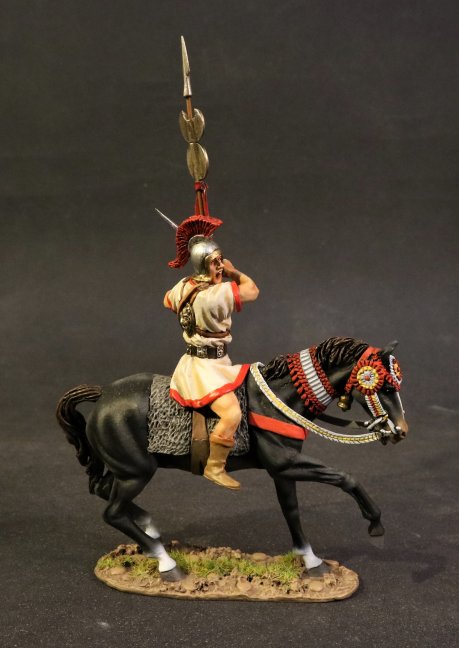
CTSP-02
ARMIES AND ENEMIES OF ANCIENT ROME,
THE SPANISH,
IBERIAN LIGHT CAVALRY.
STANDARD BEARER.
(2 pcs)
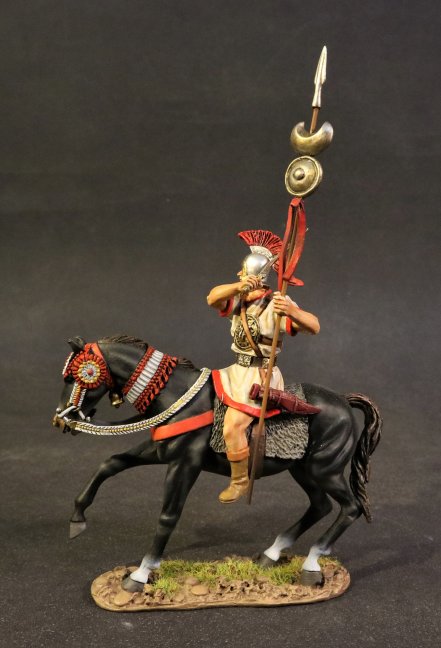
THE ANCIENTS COLLECTION
ARMIES AND ENEMIES OF ANCIENT ROME
MID REPUBLICAN ROMANS
PUBLIUS CORNELIUS SCIPIO AFRICANUS

SCIPIO-A
ARMIES AND ENEMIES OF ANCIENT ROME,
MID REPUBLICAN ROMAN,
PUBLIUS CORNELIUS SCIPIO AFRICANUS 236/5-183 BC.
(2 pcs)
Publius Cornelius Scipio Africanus (236/5 – 183 BC) was a Roman general and later consul who is often regarded as one of the greatest military commanders and strategists of all time.
His main achievements were during the Second Punic War, and is best known for defeating Hannibal at the final battle of Zama in 202BC. This victory was one of the feats that earned him the agnomen “Africanus”.
His conquest of Carthaginian Iberia culminated in the Battle of Ilipa in 206BC against Hannibal’s brother Mago Barca.
ARMIES AND ENEMIES OF ANCIENT ROME
THE CARTHAGINIANS AND THEIR ALLIES
The military of Carthage was one of the largest military forces in the ancient world. Although the navy was always Carthage’s main force, the army acquired a key role in the spread of Carthaginian power.
With its Phoenician origins, Carthage already had a long history as a seafaring people. This was helped in that the navy was a permanently manned force, whilst the army would be enlisted only for a particular campaign and then demobilized.
Therefore it was easier to understand how the Carthaginian army was a Combined arms force, which comprised light and heavy infantry, skirmishers, light and heavy cavalry, as well as elephants.
The supreme command of the military was initially held by the civilian “Suffetes” until the third century. Thereafter, professional military generals were appointed directly by the Carthaginian Senate.
Whilst the navy was mainly manned by citizens, the army was composed almost exclusively of foreign mercenary units, particularly Libyans, Numidians, Iberians, Gauls and Greeks.
Only when the city of Carthage itself was threatened would citizens be conscripted into infantry service.

CT-02
ARMIES AND ENEMIES OF ANCIENT ROME,
THE CARTHAGINIANS,
CARTHAGINIAN STANDARD BEARER.
(2 pcs)
THE NUMIDIANS
The Numidians were the Berber population of Numidia (present day Algeria and in a smaller part of Tunisia). The Numidians were one of the earliest Berber tribes to trade with the settlers of Carthage, and as Carthage grew , the relationship with the Numidians blossomed. Carthage’s military used the Numidian cavalry as mercenaries. Numidia provided some of the highest quality cavalry of the second Punic war, and the Numidian cavalry played a key role in a number of battles, both early on in support of Hannibal and later in the war after switching allegiances, to the Roman Republic.

Ancient authors, such as Polybius and Livy, tend to stress Carthage’s reliance on mercenary units, which is slightly misleading when applied to the Carthaginian army. While Carthage did employ mercenaries in the true sense of the word, Carthage’s usage of native African and Iberian recruits would not be true mercenaries as these peoples were subjects of Carthage.
Also Carthage’s army was composed of recruits from its allies fighting for Carthage in accordance with bilateral treatise. The Numidian Kingdoms are an example who provided extensive light cavalry due to the close relationship between the two states.

CTNUM-04A
ARMIES AND ENEMIES OF ANCIENT ROME,
THE NUMIDIANS,
NUMIDIAN LIGHT CAVALRY.
(3 pcs)


CTNUM-04B
ARMIES AND ENEMIES OF ANCIENT ROME,
THE NUMIDIANS,
NUMIDIAN LIGHT CAVALRY.
(3 pcs)

THE SPANISH
There is some confusion over the precise identity of the Spanish troops that fought in the Punic Wars. The original inhabitants of the Iberian peninsula were the Iberians, a Caucasoid people who were famed as warriors, and who served as mercenaries in many parts of the Mediterranean world. They served as mercenaries in the Carthaginian armies from at least 342BC.

By the 3[SUP]rd[/SUP] Century BC the Celts,9who had invaded from the North) and Iberians had merged to form a distinctive new people in the north east and central plateau of the peninsula, known as the Celt-Iberians.
The Celt-Iberians fought for the Carthaginians and by the time of the 2[SUP]nd[/SUP] Punic War it is thought that both soldiers were similar in appearance and equipment.

CTSP-02
ARMIES AND ENEMIES OF ANCIENT ROME,
THE SPANISH,
IBERIAN LIGHT CAVALRY.
STANDARD BEARER.
(2 pcs)




